 SELECTED
ISSUE
SELECTED
ISSUE
|
|
Leisure Management - Going public

Spa experiences

|
|
| Going public
|

All across the UK, the momentum is growing behind the public sector spa. David Thompson reports
|

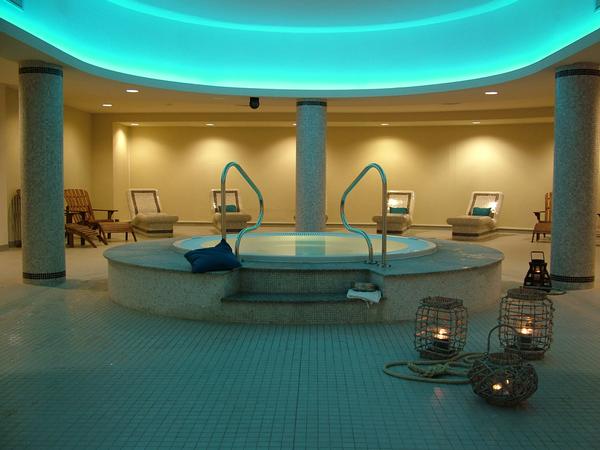
GL1: Spa helps the site compete against high-end private operators
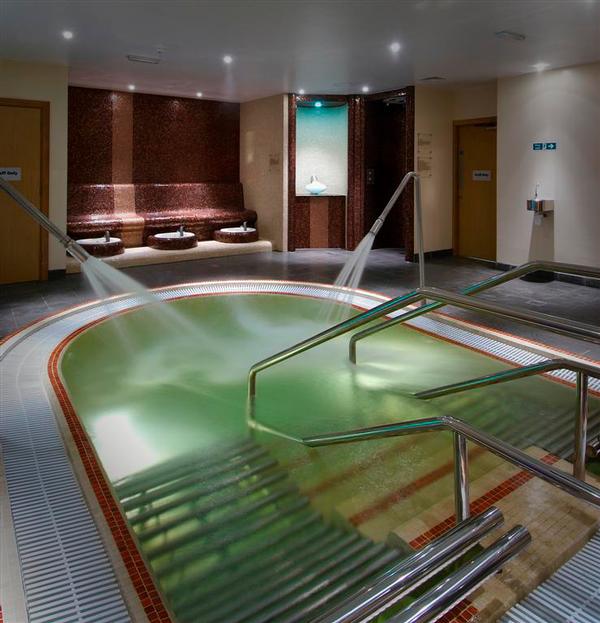
Pendle’s affordable Inside Spa has attracted a whole new demographic
|
|
|
Forget traditional perceptions of conservative local authority operations: today a growing number of partnership operators and leisure trusts are evolving the public sector offering. Spa is a particular case in point, with brands such as Everyone Active, One Leisure and Glasgow Life changing consumers’ impressions of local authority facilities and services ever since the trailblazing GLL Spa London and Pendle Wavelength developments broke onto the scene in 2007 – and they are reaping the rewards. GLL director of operations Andy McCabe believes that “social trends evolve rapidly, and what was once considered unattainable luxury can quickly be perceived as a basic necessity and lifestyle choice”. Sarah Watts, MD of Alliance Leisure, goes further, saying: “Local authorities’ agendas have changed dramatically over the last decade with regards to leisure. Provision is no longer just about traditional sports; instead, it focuses on wellness and social cohesion. Leisure facilities are becoming community hubs that aim to address health issues. Essentially they are places of enrichment.” Attracting new markets
This new spa market promises a variety of benefits to the forward-thinking operator. “A high quality health spa offering means you can compete against the high-end private membership and also help retention when challenged by the budget gym at the cheap end of the market,” says Sally Barnes, operations manager at GL1 for leisure trust Aspire.
In addition to competing for existing customers in the spa market, Phil Storey, CEO of Pendle Leisure Services, has seen a new demographic at the Pendle Wavelengths site: “Many people will not have the opportunity to experience a private spa. Inside Spa has enabled us to bring health and wellbeing spa services to everyone at an affordable price.” “It’s an inclusive, holistic approach to health,” agrees Alison Norman, contract manager for Everyone Active’s new Westminster Lodge centre. “Traditional leisure customers find the services valuable, plus there’s a whole new demographic that is attracted and introduced to our wider offering.” Alliance Leisure, among others, also cites complementary spa products as valuable contributors to the overall user experience and member retention. GLL’s ‘Gym & Tonic’ treatment, for example, is designed for pre/post workout, and in this way expands and complement the existing range of services. “This is in contrast to the private sector model, where spas have traditionally been standalone or within hotels,” says McCabe. In addition, Pendle Leisure Services, Alliance Leisure, One Leisure and Everyone Active all agree that spas offer considerable revenue generation opportunities, and some relate this to supporting loss-making swimming pools. Recipe for success
Heinz Schletterer, CEO and owner of the Schletterer International Group, says: “Public spas that are particularly successful are focusing on health elements, such as mineral- and trace element-enriched baths, healing liquid applications, relaxation programmes, steam and aroma baths, light and sound therapy. The public sector must not make the mistake of providing uninspired community wellness facilities for the sake of it, but needs authentic and competitive concepts in order to be successful.” “Capital spend has to be controlled and linked to the affordability identified in the business plan,” adds Watts. “In our experience, capital costs of over £1.2m may not be viable in terms of creating a sustainable bottom line.” Growing momentum
Not everyone agrees with the current move towards public sector spas. “Most council areas aren’t able to invest and maintain top-end facilities,” states Barr and Wray’s Lorne Kennedy. Competitor Dalesauna sees things differently however, with sales director Gerard McCarthy saying: “Public sector facilities are allowing people to embrace wellbeing activities as part of healthy lifestyles, not just guilty pleasures.” Certainly there are a number of examples of successful public sector spa developments across the UK, from Glasgow and Pendle in the north to St Albans in the south. As demand and public opinion continues to evolve, perhaps the question isn’t if the UK public sector will catch up with the holistic health and wellbeing offer of its continental counterparts, but when.
|
|

|
Case Study 1

ENHANCING THE MEMBERSHIP
Refresh Spa at the Emirates Arena, Glasgow, UK

Glasgow Life’s state of the art sports and leisure complex includes the operator’s first major spa facility. There are four treatment rooms, dedicated manicure and pedicure area, caldarium, sauna, steamroom, sanarium (herbal aroma sauna) and vitality pool. A new membership has been introduced to allow existing Glasgow Club members to add the spa to their membership for £25 a month, giving them access to the hydro and thermal areas.
“As the Glasgow Club continues to compete successfully with the private sector in the city, and grows its membership [see also p30], there is anecdotal evidence to suggest that this addition to the offer will enable a range of supplementary promotions, incentives and offers to give marketing, financial and staff motivation opportunities,” says Spa Developments Consultancy’s Colin Cameron, who works with Glasgow Life’s management team at the spa.
The facilities at the Refresh Spa were designed to compare directly to the top hotel spas in Scotland, while pricing was matched to high street spas and beauty salons. Research was conducted to select facilities, treatments and products (provided by Elemis and Murad), in order to attract existing luxury spa customers who may be tightening their purses, as well as introducing a new market to the wellbeing benefits of a spa.
“Ultimately it will be a combination of the spa’s aesthetics and standards of service – in terms of staff knowledge and experience – that will play a very important role in attracting and retaining Glasgow Club members,” adds Cameron. “The range of services and treatments will enhance membership options, adding a new layer of service opportunities to increase usage levels, enhance activity and encourage loyalty.”
| |
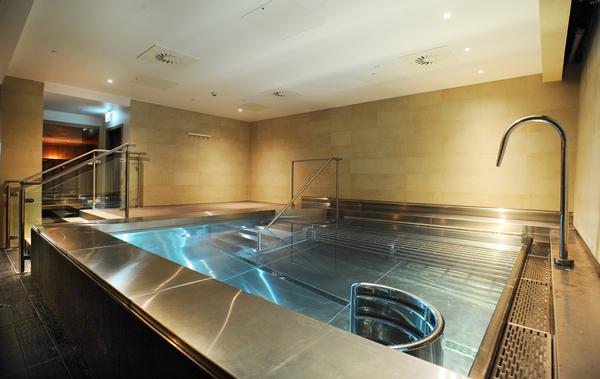

|

The Refresh Spa offers a high-end look |
|

|
Case Study 2

BROADENING THE CATCHMENT
Verulamium Spa at Westminster Lodge Leisure Centre, St Albans, UK

Everyone Active’s brand new £24.7m Westminster Lodge centre, operated in partnership with St Albans City & District Council and opened in late 2012, houses the leisure provider’s first spa.
The Verulamium Spa consists of a tepidarium (warm room), laconium (hot room), sauna, steamroom, aroma room, hydrospa relaxation pool, relaxation area (with heated benches, loungers and poolside beds) as well as an outside relaxation terrace and treatment rooms. The spa has dedicated changing rooms and its own bistro, and was fitted out by Dalesauna. Everyone Active has since opened its second spa, at the new Westcroft Leisure Centre.
“The spa feels very different from the rest of the centre,” says Alison Norman, Everyone Active contract manager for St Albans. “We use separate branding for everything in the spa and, combined with the luxurious feel of the design, fittings and service, this helps create an atmosphere of exclusivity and escape.”
The spa facilities were specified by the council before the tender process began, with the aim of attracting more people into St Albans from London and the surrounding areas, as well as offering affordable wellbeing to local residents that rivals any private offering in terms of facilities and treatments.
Memberships can be purchased separately or together with use of the gym, sports or swimming facilities at the centre; combined members receive a 10 per cent discount on spa treatments. Alternatively, users can access the spa – with a choice of over 30 spa and beauty treatments – on a pay-as-you-go basis by registering for a free Everyone Active card.
The Verulamium Spa has also partnered with local hotel St Michael’s Manor, which sells spa packages in conjunction with its luxurious accommodation.
“Sales of Clarins, Espa and Jessica treatments and products are proving very successful,” says Norman. “We are also seeing more usage of the bistro, where spa customers meet friends and family who may be using other facilities at the centre. Such a comprehensive wellbeing offering under the same roof creates a real health and wellness hub for the local community, as well as a destination for those from further afield.”
| |
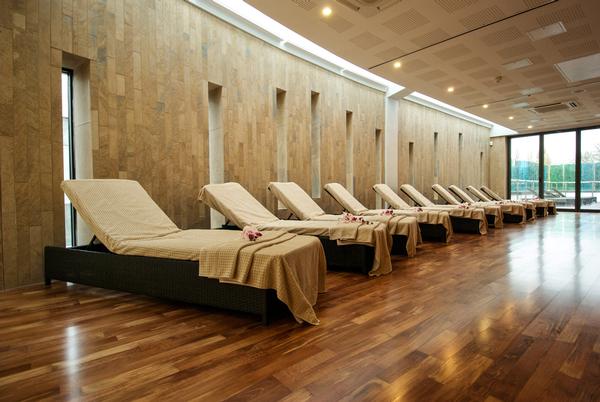

|

Separate branding makes the spa stand out from the rest of the centre |
|

|
Case Study 3

AN UNTAPPED DEMOGRAPHIC
Pure Day Spa at St. Ives Leisure Centre, UK

One Leisure’s Pure Day Spa brand is set to add a flagship third site in April 2013, located in St Ives, to complement its existing spas in St Neots and Huntingdon. With installation by Milk, the St Ives site will have six treatment rooms, nail pods, four heat treatment rooms, heated relaxation beds, water beds, foot baths and tropical showers. It will occupy the top floor of the new leisure centre, complete with its own lounge area, changing facilities and reception. Dedicated staff, management and branding will help create a private health club-style environment, while still maintaining local authority affordability and inclusivity for the community.
“The key to the Pure Day Spa offering is our TEA strategy – Theatre, Experience and Advice – from the moment the customer enters reception,” says Gemma Bonnett, brand and marketing manager at One Leisure. “The retail side is also important, with profit lines being very high. Customers are keen to learn about the Decléor products we offer. The staff have to be well-trained. They receive continual training to ensure they have the knowledge to provide the best service and advice.”
Spa membership is offered as a standalone service or can be bolted on to other pre-paid leisure activity memberships, and casual usage is also available. The bolt-on option includes a discount for beauty treatments to entice existing members and cross-promote the centre’s leisure offers.
“Spa and wellbeing complement the more traditional sport and fitness opportunities we provide,” continues Bonnett. “Local authority cannot appeal to the luxury hotel or spa customer, and there’s no reason to even try to compete in this market. The Pure Day Spas deliver a high-end customer experience, attracting a previously untapped demographic.
“Retention, repeat usage and up-sell of other services have proven the success of the first two sites, and growth of the current product is fundamental to its success as a brand and income generator.”
| |
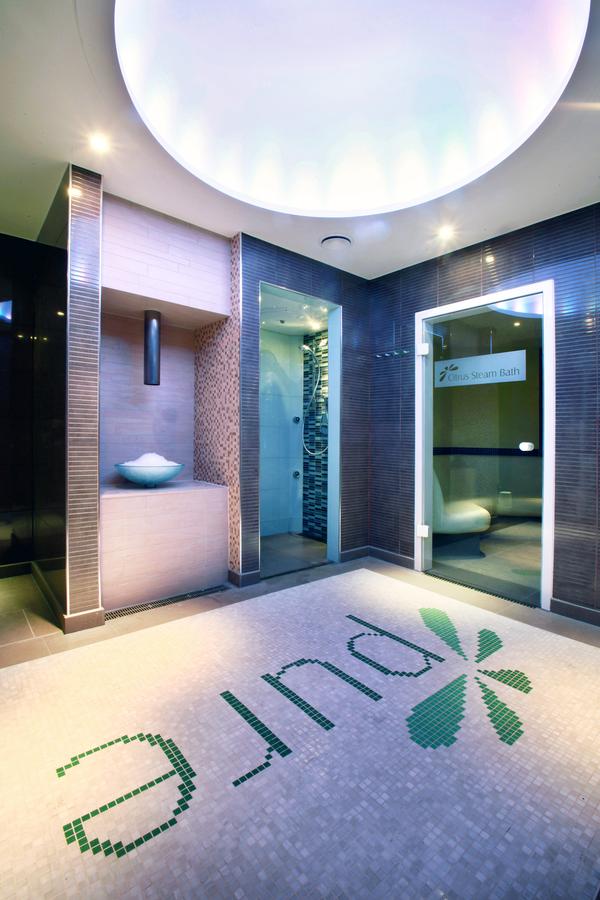

|

Repeat spa visits are key to success |
|
 |
| Originally published in Health Club Management 2013 issue 2
|
|
 |
|
|
|
|
|